The Supermicro X12SDV-10C-SPT4F is a fascinating platform. It offers solid 10-core Intel Xeon D-1749NT performance and other features. As an example, this platform has both 25GbE SFP28 and 10Gbase-T onboard all in a mITX form factor. We are going to take a look at those in this review.
While we recently reviewed the Supermicro X12SDV-4C-SP6F, that was a Flex ATX platform. At the end of the day, many chassis are designed for mITX so that form factor difference can matter, but we will note that Supemicro also has a X12SDV-10C-SP6F if you would prefer that form factor and networking combination.
Supermicro X12SDV-10C-SPT4F Overview
The motherboard itself is one of Supermicro’s mATX edge offerings. While Supermicro still has many mITX offerings, the additional capabilities of today’s Intel Xeon D lines make the form factor more challenging as we will see.
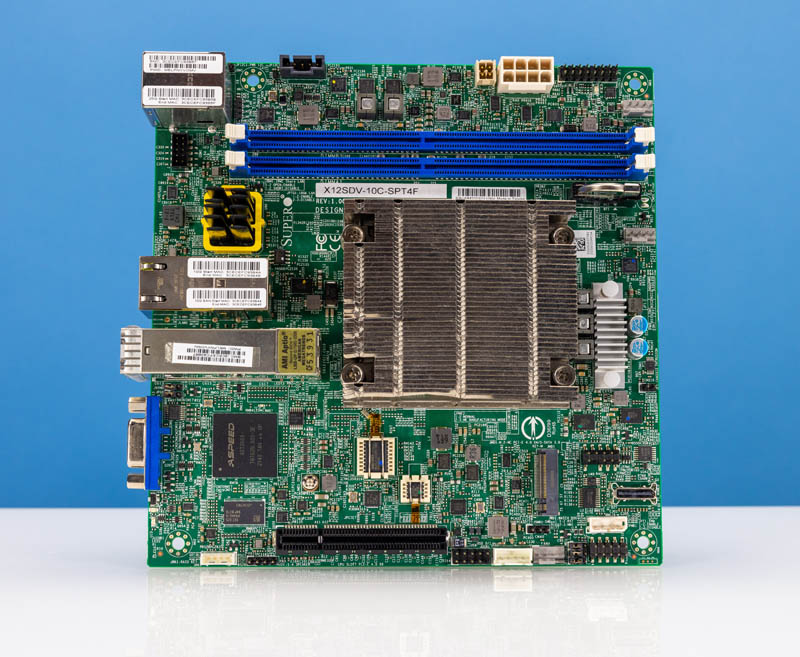
The X12SDV tells us it is a X12 single-socket Xeon D platform. The -10C- in the model number tells us this is a 10-core Xeon D. In this case, it is the Intel Xeon D-1749NT. If you want to learn more about the Xeon D-1700 and D-2700 series, check out our video:
The part is 10 cores/ 20 threads and has the newer features of the Ice Lake-D generation, including an updated microarchitecture and PCIe Gen4.
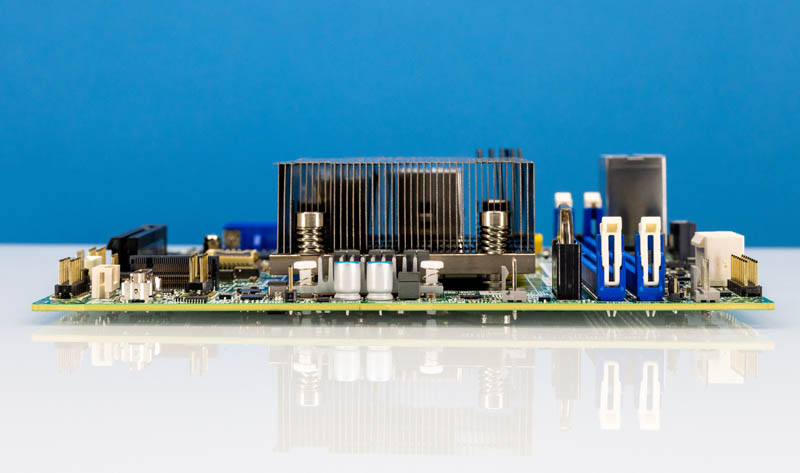
We wanted to quickly point out that many of our readers will see a passive heatsink affixed to this motherboard. That is because it is designed for chassis fans providing airflow. The small heatsink is not enough to keep the 90W SoC cool without chassis airflow. 90W is a lot more than we saw with the Xeon D-1500 series, but idle power consumption is still just 25-35W depending on the OS and configuration.
Supermicro is using a two-channel and one DIMM per channel (1DPC) layout here. As we covered in our Welcome to the Intel Ice Lake D Era piece, the Xeon D-1700 actually has three memory channels available, but we commonly see two channels being placed as they are here.
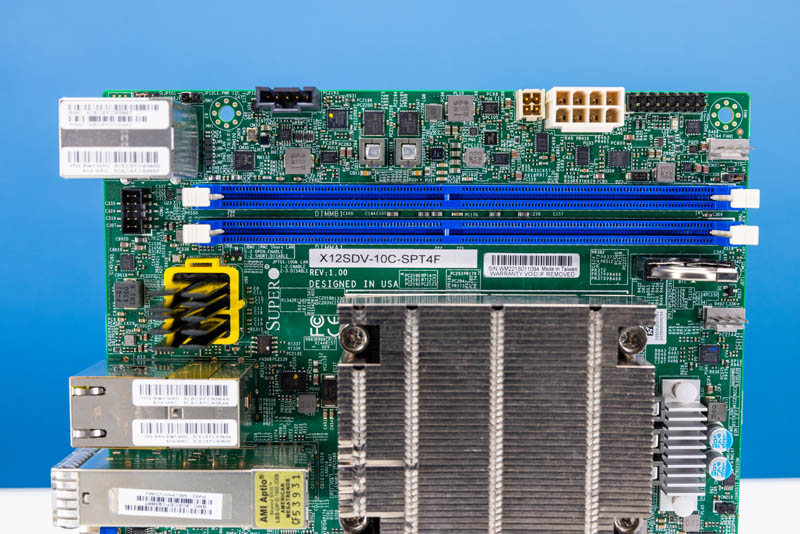
The power input here is focused on DC power applications, so we do not get a standard 24-pin ATX connector. This has been common on Supermicro embedded motherboards for several generations.
On the bottom of the motherboard, we get the BMC, a PCIe slot, a M.2 slot, and an Oculink port.
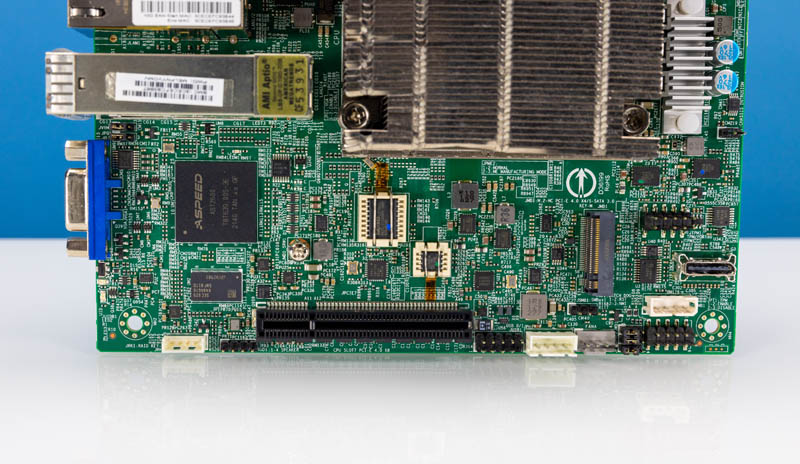
The M.2 slot is both PCIe Gen4 x4 and also has a SATA option.
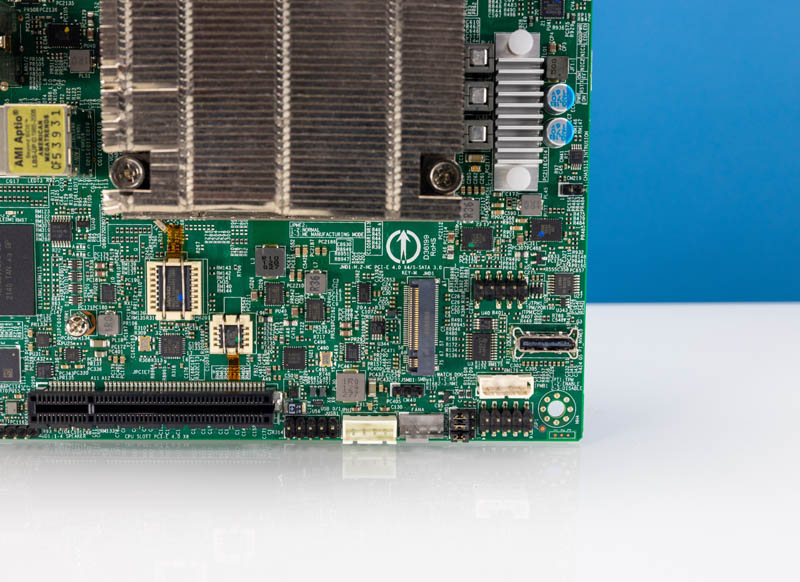
The Oculink port provides either four lanes of SATA III or can provide a PCIe Gen3 x4 link.
The PCIe slot is a PCIe Gen4 x8 slot. One feature we appreciate is that Supermicro uses an open-ended x8 physical slot allowing for longer cards to be placed in the slot.
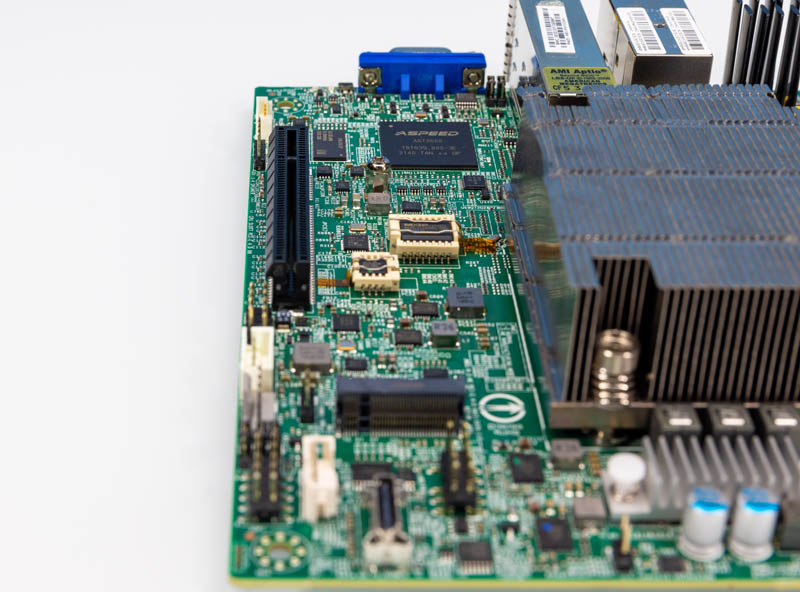
A tall heatsink covers the Intel X550 for the rear 10Gbase-T ports. There is a yellow retention clip around it. The heatsink fins in our test unit got bent during shipping, but they still worked.
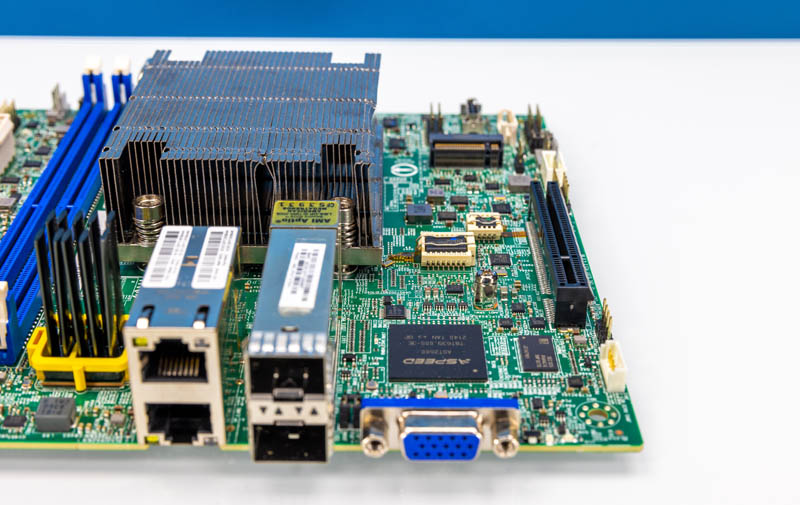
Something missing from this generation is a traditional 7-pin SATA port. There is simply not one on the motherboard, and there are no “gold” ports for SATA DOMs. The market has moved to M.2, but this is a fairly notable example of where the legacy port has been omitted.
Perhaps the most exciting feature is the rear I/O. Here we get Supermicro’s standard two USB 3 Type-A ports, a VGA port, and an out-of-band management port. Then comes the networking. There are two 10Gbase-T ports via the Intel X550.
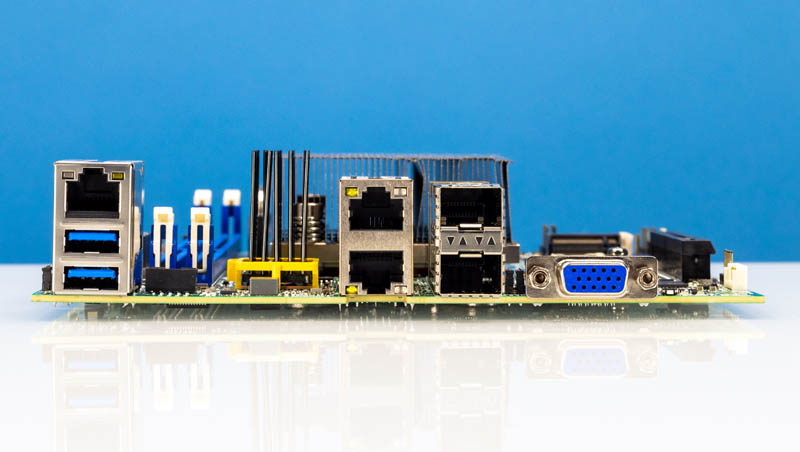
Two SFP28 cages provide 25GbE ports that the Intel Xeon D-1700 SoC powers. We are going to look at them in more depth later in this review.
Next, let us get to management and performance.

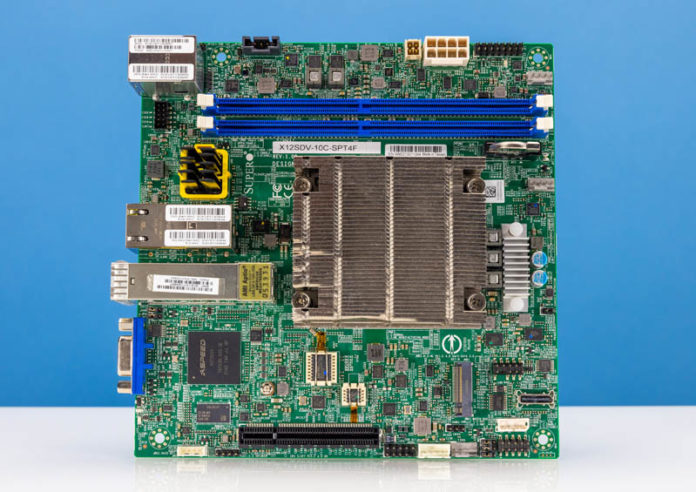



Excellent review, Thank you for posting it.
you mention in the article that the 1749NT does not feature Intel’s QAT but on its ark page it is listed as present. is this a mistake on Intel’s part ?
“Supermicro is using a two-channel and two DIMM per channel (1DPC) layout here”
I think y’all meant to say “Supermicro is using a two-channel and one DIMM per channel (1DPC) layout here”
Can’t wait to pickup one of these boards. Amazing review. Thank you .
I would really like to know if that X550-AT2 can run NBASE-T under PfSense.
You should provide geekbench single core and multicore scores so these type processors can be more easily compared to consumer processors. Plenty of your audience makes tough decisions between used enterprise and consumer grade for various parts of their home labs.
I’m curious if there’s any kind of aftermarket heatsink for these? I’d like to use one in an overkill tabletop NAS build and am concerned about proper airflow. They’re really the only mITX that ticks all my boxes – OOB IPMI on-board, 10+GB NICs on-board (SFP* cages a plus), high RAM capacity.
I don’t know of an aftermarket heat sink solution for these, but the mounts appear to be on ~80mm and ~50mm centers. Noctua (e.g.) uses an 80mm 2-point mount, so it might be possible to adapt one to this, but it’d be super tight with the Ice Lake-D’s narrow keep-out area. A down-firing model (with the heat pipes coming out one side only) might fit, and might block slots. VLP DIMMs might also help. I can see why they didn’t use an LGA 115x/1200/1700 -style keep-out and mount (size), but it sure would have been convenient.
Why would pfSense have trouble with the x550?
Isnt this mitx 17xx and the big brother a little bigger matx The one on 27xx series? That is The case IF I look at supermicro site (in my case i only have place for mitx )silverstone 380 i think
Man, what happened to the CPU heatsink? The fins in the middle inside are all crunched up.
Any guesses if TrueNas will pick up all the networking?